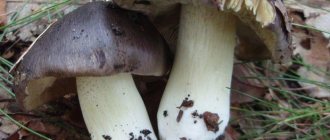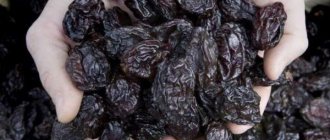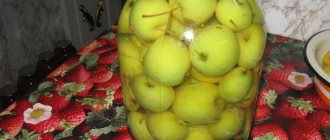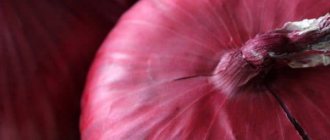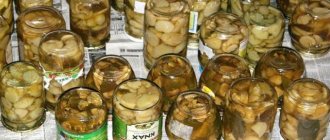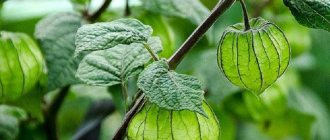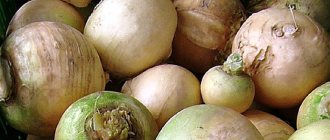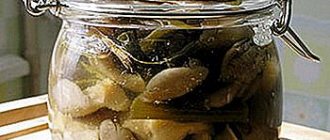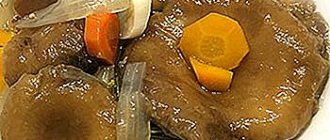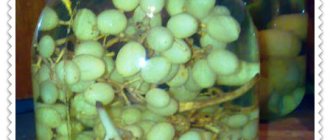It’s not for nothing that everyone loves and eats a fruit like plum in any form. It is very useful not only in fresh, but also in processed state. Compotes, jelly, and jam made from it will help with kidney disease, atherosclerosis, gout and rheumatism. Plum is also taken as a mild laxative. Its fruits contain citric, malic, succinic and quinic acids. Plums in their own juice with sugar are rich in these and many other substances, the preparation of which we will now consider.
How to cook plums in your own juice
To prepare this winter preparation at home, ripe fruits, ripened on the tree and slightly unripe, are suitable, that is, those that have almost reached biological maturity, but still have dense pulp. All of them must be exclusively intact, without damage, dents, spots of rot and traces of any infections or diseases, without stalks.
The variety of plums does not matter, you can take any, fruits of any shape and color will do. As for the size, the ideal option is medium, but large and small ones can also be preserved.
The containers in which you can preserve fruit are ordinary glass jars of various sizes, from 1 to 3 liters. They must be intact, without chips or cracks, preferably hardened, that is, those that were previously used for canning. Before placing drains in them, the jars must be washed in warm water and soda, heated over steam and dried. Also sterilize the lids in boiling water. You will also need a large saucepan for sterilization, of such a height that jars filled with water filled up to the hangers can easily fit into it.
Then prepare the plum fruits: wash them several times in warm water, removing all adhering dirt and dust. After this, cut each fruit in half along the longitudinal line and remove the seeds, if so called for in the recipe.
Traditional recipe for plums in their own juice
To prepare plums in their own juice according to a recipe that is considered traditional, you will need a minimum of products, only 2 ingredients:
- plum – 10 kg;
- sugar – 5 kg.
Here's how to prepare plum jam for the winter:
- Remove all stems and seeds from the washed fruits, pour them into 1-1.5 liter jars, sprinkling each layer with granulated sugar. Place more tightly, compact lightly.
- Pour some warm water on top and shake well to mix everything.
- Place a piece of cloth or a special stand at the bottom of a large, voluminous pan, place the jars on it and fill them with warm liquid up to their hangers.
- Place the pan on the fire and bring the water to a boil.
- When the water begins to boil strongly, reduce the heat to low and simmer for 15 minutes.
- Under the influence of heat, the plums will gradually begin to settle, and free space will appear in the jars. It needs to be filled with new portions of fruits and sugar.
- After adding, sterilize again for another 15 minutes.
- After the allotted time has passed, remove the jars from the pan, grabbing them with a special device, and immediately roll up the lids.
- Leave to cool at room conditions for exactly one day. It is not necessary to wrap them; you can leave them as is.
After cooling, plums can be stored both in cellars and indoors. They are sterilized, so they can withstand storage even in warm conditions.
Canned plums for the winter without sterilization. Pickled plums with hot peppers
A spicy snack is made by marinating plums with hot peppers. Of course, this dish is not for everyone, but hot, spicy plums are something completely indescribable! So lovers of spicy foods should try preparing this preserved food for the winter.
Pickled plums with hot peppers
Ingredients:
- Plum – 700 g;
- Hot pepper – 2 pods;
- Cloves – 5 buds;
- Laurel – 5 leaves;
- Allspice – 5 peas;
- Star anise – 1 star;
- Apple cider vinegar – 2 tbsp. l.;
- Sugar – 2 tbsp. l.;
Important!
The amount of pepper can be adjusted. 2 pods per 700 g of plums is the golden mean. If you put less pepper, the taste will be more spicy, delicate, and if you add more, it will be spicy.
Preparation:
- In a container for cooking preserves, water is brought to a boil. Then the fire is reduced to a minimum and you need to add cloves, allspice, bay, star anise, and sugar to the water. The mixture should simmer for another 5 minutes.
- Plums and hot peppers need to be washed, dried, pierced in several places and placed in a common basin. When the marinade is ready, pour it over the plums and peppers for about 20 minutes.
- When 20 minutes have passed, the marinade is drained and boiled, then the plums must be poured again and left for 20 minutes. This procedure is repeated a total of 3 times.
- When the plums are infused in the marinade for the third time, the liquid is drained and brought to a boil again. Peppers and plums should be placed in sterilized containers for twisting. As soon as the marinade boils, it must be poured into jars and immediately rolled up.
Plums in their own juice with pits
Here, the best option would be slightly unripe fruits, since they are denser than ripe ones and retain their shape better even after prolonged heat treatment. There is no need to remove the seeds from them, so the fruit should remain whole. If you plan to preserve them in 3-liter jars, then the drain should be taken at the rate of 2 kg per 1 container. Standard ingredients:
- 10 kg of freshly picked fruits;
- 5 kg granulated sugar.
Attention! The process of preparing plums in their own juice according to this recipe is no different from the classic one. But since larger containers are used, the sterilization time must be proportionally increased to 30 minutes.
Sunshine in a jar - yellow plum
In addition to the familiar blue fruits, yellow plums are also rolled up in their own juice for the winter. They are incredibly tasty and fragrant, and also look great in a jar! And if you experiment with adding various spices, you won’t be able to tear your ears away from this dessert.
To ensure that the yellow plum remains intact after seaming, it is better to choose hard fruits.
- 500 g yellow plums;
- 500 g sugar;
- vanillin.
The cooking technology is as follows:
- Wash the plums and remove the pits.
- Select 200 g of plums from the total mass and grind them using a meat grinder, then squeeze well and refrigerate for 24 hours.
- After a day, strain the juice and prepare syrup from it, adding vanilla and sugar.
- Place the remaining 300 g of plums in a jar, pour in the prepared syrup and sterilize for 20 minutes.
- Then roll up the plums, turn the jar over and wrap them in something warm.
Plums for the winter without sugar
For one 1 liter jar you will need about 0.75-1 kg of plums. They can be round or oblong, fully ripe or slightly unripe. The main thing is that they are as sweet as possible, since no sugar is added to them during cooking. It is better to take small plums with dense pulp. The fruits of the Hungarian (Ugorka) variety are ideal.
These plums should be prepared as follows:
- Wash them, changing the water several times, and remove the seeds, carefully cutting each fruit along a longitudinal line with a knife.
- Fill the jars in halves to the top, sprinkling each layer with sugar and distributing it evenly inside the container.
- Place on the stove and sterilize for 10–15 minutes.
- Add plums and sugar when the first batch has set.
- Sterilize again, but for 20 minutes.
- After removing the jars from the pan, immediately seal them with a key using varnished lids and cover with a warm blanket.
After the jars of plums in their own juice without sugar have cooled, which will happen in about a day, move them to the cellar or put them on a shelf in the pantry.
Plum slices for those with a sweet tooth
All you need for preparation is fruit, sugar and, of course, jars for seaming. Pre-prepare the jars - sterilize them. The amount of fruit depends on the capacity of the container, and the amount of sugar depends on how much sugar is needed to thoroughly cover the fruit.
Ingredients for 1 half-liter jar:
- plum – up to 600 g;
- sugar – approximately 300 g.
Cooking technology:
- Wash the plums that are not very ripe (so that they are hard) thoroughly, separate them and remove the pits. Next, place the fruits in jars in layers, sprinkling them thoroughly with sugar.
- Place the filled containers with plums for sterilization.
- Place gauze or an old, unnecessary towel on the bottom of a tall pan.
- Place the jars on a towel, but it is advisable that they do not touch each other.
- Add warm water to the pan (without adding two fingers to the height of the cans of plums) and put on fire.
- As soon as the water boils, the heat must be reduced, otherwise it will fall into the container with the fruit.
- During the sterilization process, the drain will heat up and release juice, the sugar will dissolve - as a result, the fruit in the jar will settle, and a void will form on top. It must be filled with new layers of plums and sugar to the very top of the jar. Do not be afraid that the juice will overflow over the edges - on the contrary, over time the contents of the jar will decrease.
- The plum in its own juice with sugar is ready to be sealed when it is completely covered with juice and begins to float. This will take approximately 50 minutes. In the future, such a roll can be stored without problems in an apartment on the mezzanine or under the bed. And if you are lucky enough to have your own basement, the cooking time can be reduced.
- Wrap the rolled up jars in something warm and leave to cool.
How to roll a plum in its own juice with cloves
This recipe for canning plums in their own juice is different in that, in addition to sugar, an aromatic seasoning – cloves – is added to the fruit to give it a unique smell. Otherwise, you will need the same ingredients:
- 10 kg of fruits;
- 5 kg granulated sugar;
- 2-3 cloves per liter jar.
Sterilize the plums for 15 minutes first, and after adding new fruits to replace the ones that have shrunk, another 15 minutes. After cooking, leave the jars to cool for 1 day in the room. Afterwards, if there is a cellar, then move it to it, where the conditions for storing canned products are better.
Flavor variations
The use of pre-treatment options and additional ingredients of fruits preserved in their own juice for the winter allows you to change the shade of taste. Thus, the following options are widely used:
- The use of cloves will add flavor. The procedure for canning in its own juice remains classic, but when placing plums inside the jar, add 2-3 cloves per liter container.
- Vanillin gives plums canned for the winter a pleasant flavor. It is also added at the stage of placing fruits inside the container, at the rate of 10 kg of fruits - 1 packet of vanillin.
- Pre-boiling the plums in their own juice, which is mixed with sugar, over low heat will reduce the time until they are ready. This is followed by distribution into jars, pasteurization and sealing of jars for the winter.
- Blanched plums release moisture faster. The procedure is represented by dipping the fruits in boiling water for 5 minutes, followed by rinsing with cold water.
- Low-juiciness plum fruits can be used no less effectively. You need to wash them, remove the seeds and dry them. Drying is done in the fresh air or in the oven. You will get prunes. Prepared jars are filled with prunes and sugar in a 2/1 ratio. Add a small amount of water. Sterilize for about 30 minutes. Prunes are ready for the winter.
Advice! If it is not possible to heat-treat jars of fruit in a large container with water, then you should use an oven. The jars are placed in the oven. At temperatures up to 1800, sterilize for 40–50 minutes.
How to properly preserve plums in their own juice with sugar is presented in the following video:
Quick recipe for plums in their own juice
This recipe will be useful for those who cannot or do not want to sterilize jars for a long time. Ingredients:
- fruits – 10 kg;
- sugar – 5 kg.
The difference in preparation between this recipe and the previous ones is that:
- This time, the plums are not scattered fresh into jars, but are first boiled in a saucepan along with sugar until juice appears.
- Then they are placed in jars with a capacity of 0.5 to 1 liter along with the released juice.
- Place them in a saucepan and sterilize for at least 15 minutes after the liquid boils.
After natural cooling, they are placed in a cellar, basement, or left in a cool room for long-term storage.
Natural plum
Ingredients:
- plums
Production technology:
- As usual, wash the plums, halve and remove the pit.
- Pour into jars all the way to the top.
- Leave to sterilize for 20 minutes.
- As the fruits settle, they are added and the sterilization time is increased by another 10 minutes.
- Close the jars of plums, place them upside down, cover with a warm towel and let cool.
- Store in a cool place.
Blanched plums in their own juice
As the name of this recipe suggests, the fruits will need to be blanched before cooking. For this:
- Place them in portions in a colander.
- Dip into boiling water for 5 seconds, then pull out and immediately immerse in cold water.
- Place in jars, sprinkle evenly with sugar, and set to sterilize for 15–30 minutes, depending on the volume.
- After the plums are removed from the pan and immediately sealed.
After they have cooled, they are placed in the cellar, where they will remain until the new harvest.
How to make soaked and salted plums for the winter: recipe
Soaked plum: example of serving
Fermentation and pickling are based on the same natural fermentation processes. But we salt the vegetables, and wet the berries and fruits. Therefore, one of the recipes presented below is suitable for soaking/salting plums.
Hungarian or sloe plums are suitable for soaking. If these varieties are not available, give preference to slightly unripe fruits with very thick skin.
How to properly wash fruits before canning, see the beginning of the article.
Important: before placing in a jar, the fruits should be thoroughly dried and pierced with a toothpick in several places.
Consumption of fruits and brine per 1.5 liter jar:
- whole plums - about 1 kg (the amount of fruit depends on the density of the fruits),
- brine - 1 l (the amount of marinade depends on the density of the fruit).
How to prepare the marinade:
- Mix 1 liter of regular drinking water, 15 g of table salt (not iodized), 50 g of granulated sugar, 10 g of bay leaf in one container.
- Boil. Boil for 2-3 minutes. During the boiling process, skim off any foam that forms. Cool to room temperature.
How to cook:
- Place the prepared fruits in a jar up to the shoulders. Pour 20 g mustard powder on top and lay cherry or currant leaves (to the top).
- Fill with marinade to the brim. Cover with a nylon lid and leave in a dark place for fermentation. To prevent the marinade from leaking out during the fermentation process, place a deep bowl or plate under the jar.
- Fermentation time is from 3 to 10 days (depending on the room temperature and the ripeness of the fruit).
- After the plums have gone through the initial stage of fermentation, seal the jar with a nylon lid, put it in the refrigerator and leave for 20-30 days to ripen.
Cooking plums in their own juice in the oven (or in the oven)
The ingredients are the same as in the traditional recipe. Cooking method:
- Sort the fruits, wash them in running water and be sure to remove the seeds.
- Fill 1-1.5 liter jars with halves, pouring layer by layer and sprinkling them with sugar. Place the fruits tightly, pressing them down with a spoon.
- Place the jars in a preheated oven for 40-50 minutes.
- After this, roll up immediately.
Once cooled to room temperature, transfer jars to a cool basement.
Canned prunes in their own juice
You will need plums that are dense and not very juicy so that they can dry faster. Before you make the jam, you first need to cook the prunes. For this:
- Remove pits from plums.
- Spread them in 1 thin layer outside, in the sun and dry for as long as possible until they acquire their characteristic consistency, color and aroma. They need to be turned over periodically so that they dry thoroughly on all sides.
- You can also dry the fruits in the oven of a gas or electric stove.
From 10 kg of fresh fruits after drying, approximately 3-3.5 kg of dried fruits are obtained. After the prunes are obtained, you can start making jam:
- Place it in prepared jars, add sugar (at a ratio of 2 to 1).
- Add a little water and mix everything.
- Place the jars to sterilize for 30 minutes.
Cooling takes place at room temperature. Jam can be stored indoors or in a cold cellar.
Cooking process
Prunes prepared for the winter in their own juice are not only tasty, but also aromatic. This preparation can be used in winter to create various desserts, pies, pies, baked with chicken or its parts, leveling the sweetness with salt or soy sauce. Syrup is often added to fruit drinks, teas, and lemonades. With canned plum halves it is very easy to create canapes and other mini-treats, mixing them with smoked meat, sausage, cheese, etc.
To prepare the preparation, use the “Hungarian” plum variety - they attract the eye on the shelves with their bright blue color and round shape. This variety itself tastes sweet, so it’s better not to add a lot of granulated sugar - extract it with citric acid or lemon juice.
So, prepare the necessary ingredients and let's start cooking!
Rinse the plums in water, divide each fruit into two halves and remove the seeds.
Place the fruit halves in containers, preferably 0.5-liter jars, sprinkling each layer with granulated sugar. It is precisely half-liter containers that can be sterilized in almost any saucepan or cauldron - boiling water will reach the hangers of the jars, and the product in the containers will cook in its own juice.
Cover the containers with tin lids, but do not roll them up.
Line the bottom of the pan with a towel, place the filled jars on it, pour in warm water, not adding slightly to the edges of the pan, as the water will boil. Pour a couple of pinches of citric acid into the fruit jars themselves, pour in 50 ml of hot water - the rest of the juice will be released by the plums themselves. Place the container on the stove, bring the water in it to a boil, then reduce the heat to low and simmer for about 30 minutes. The water in the pan should be bubbling slightly! You can use your imagination and add star anise, ground cinnamon, vanilla, various sweet seasonings and flavorings to the jars!
Once the specified time has elapsed, remove the jars from the pan using an oven mitt.
Immediately seal them with hot threaded or keyed lids, check the tightness and shake slightly so that the sugar from the bottom dissolves in the syrup. Cool, if desired, you can wrap it in a blanket.
Afterwards, take the prunes in their own juice to the pantry; the shelf life of the preparation is about 1.5 years, it is perfectly stored at room temperature!
Canned plums in their own juice, halved
To prepare jam according to this recipe, you will need to take 10 kg of ripe, juicy, but still dense fruits. Plums can be any color: white, yellow, red and dark blue. You will also need sugar (5 kg). Sequencing:
- Wash the fruits, cut them lengthwise with a sharp knife and remove the seeds.
- Place the halves in jars and sprinkle evenly with sugar.
- Sterilize according to traditional recipe.
After mandatory cooling, send the jars for storage.
Plums canned in syrup with pits: recipe
Plum in syrup with pit: example of serving
Consumption of fruits and syrup per 0.5 liter jar:
- whole plums - 400 g,
- syrup 40% - 185-200 g.
Consumption of fruits and syrup per 1 liter jar:
- whole plums - 700 g,
- syrup 40% - 350-400 g.
How to prepare 40% syrup: mix granulated sugar 400 g and regular drinking water 600 g in one container. Bring to a boil. Boil for 2-3 minutes. During the boiling process, skim off any foam that forms. The yield of syrup from the above proportions is 850 g.
If the fruits are sour, increase the sugar concentration to 45%. To do this, take 450 g of sugar and 550 g of water.
Preservation of compote:
- Place the prepared fruits in jars tightly, but without crushing them.
- Boil water for scalding. Pour boiling water to the very top of the jars. Let stand for 10-15 minutes.
- Prepare syrup.
- Drain the water from the cans. Quickly fill jars with scalded fruits with syrup.
- Seal hermetically.
Rules for storing plums in their own juice
You can store the blanks either in the house at a relatively high temperature, since they have been sterilized, or in a place specially designed for this purpose - in the cellar. Indoors, in an apartment or in a private house, you need to put them in the coldest and darkest place, for example, in a pantry or in the coldest room. The shelf life of plums in their own juice at home is at least a year, but not more than 3 years. After this period, it is not recommended to use plum jam for food; it is better to make new one from the current year’s harvest.
Canning plums without sugar
Sealing plums in their own juice for the winter without using sugar also won’t take much time. As already mentioned above, such plums can be consumed even by people who, due to a chronic illness, are not recommended to eat sweets, or by ladies on a diet - who “really want to, but can’t.”
Plums in their own juice without sugar can be rolled in two ways. When rolling natural plums in the first way, you will need plums and...plums for cooking. And nothing else - no sugar, no water. The recipe is 100% natural! The second method of canning blanched plums in their own juice is, in general, also simple - but in addition to the plums, you will also need water for pouring.

